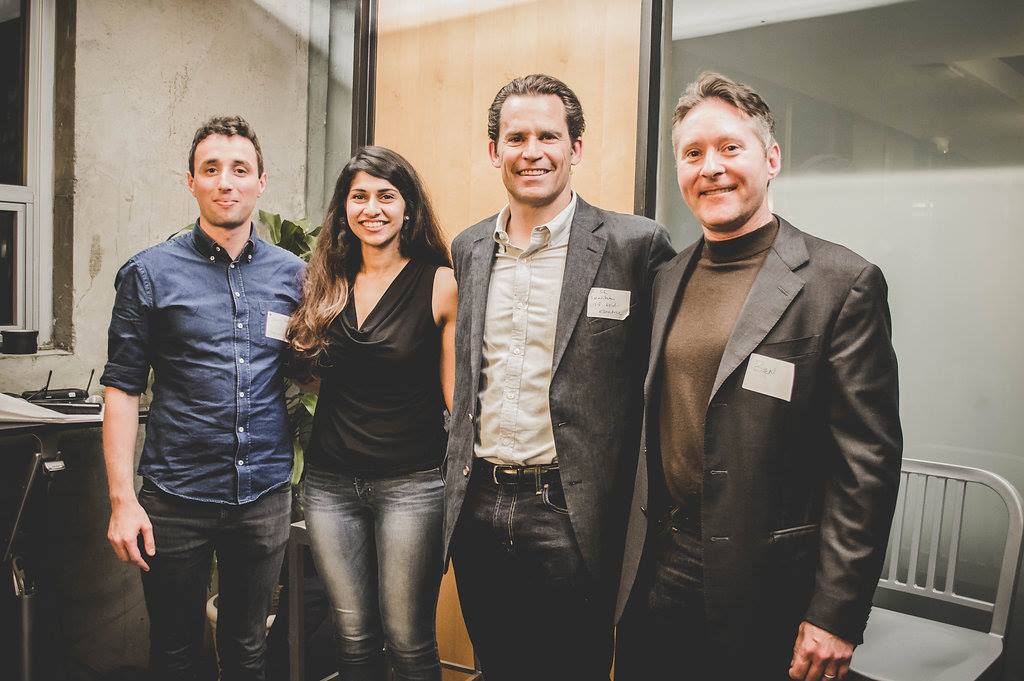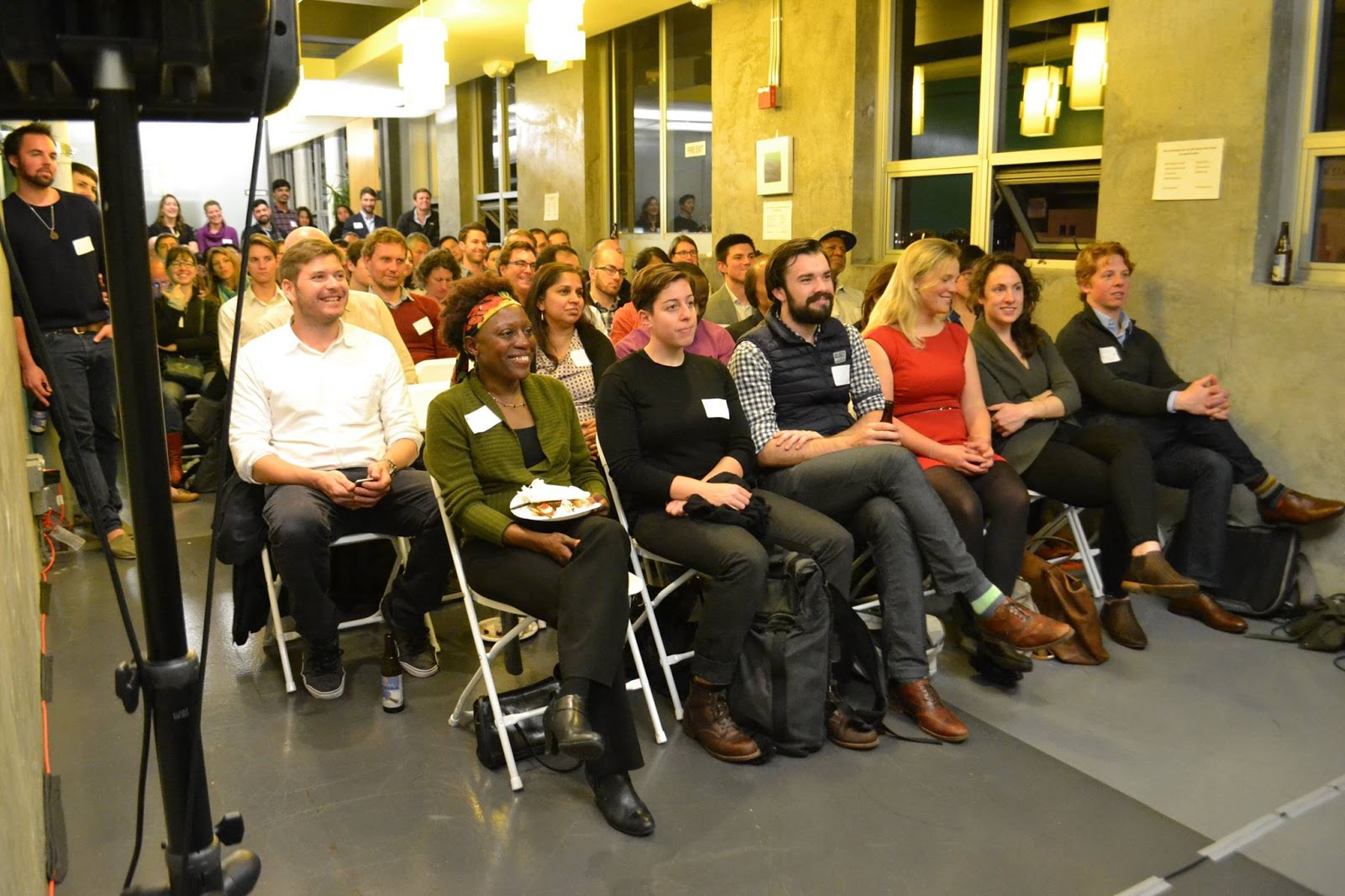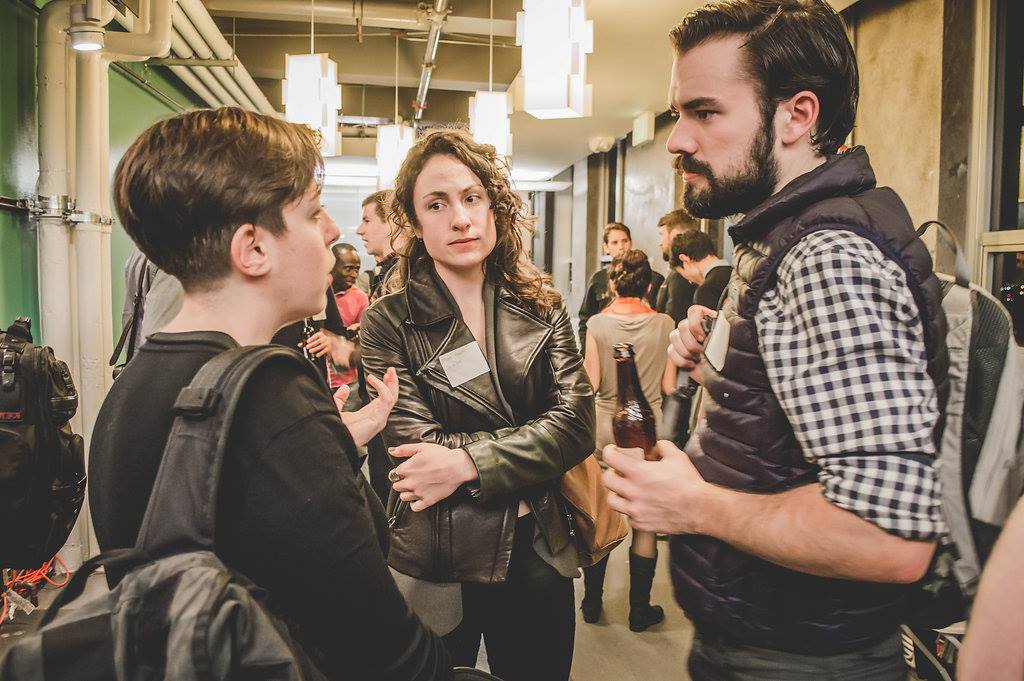One evening early this month, clean energy entrepreneurs, practitioners, and investors filled the top floor of Powerhouse, the world’s premier solar incubator and accelerator located in downtown Oakland, California with a stunning view of the Bay, for an event jointly organized by Powerhouse and Energy Access SF, a volunteer-run networking group.
The crowd of approximately 80 joined to hear about Financial Innovation in Energy Access from a panel of some of the foremost experts in the field: Sandhya Hegde, an engineer and Venture Capital investor at Khosla Impact; Bill Lenihan, Chief Financial Officer and Head of Business Operations at Off.Grid:Electric; and Ben Cook, Vice President of Structured Finance at SolarCity. The panel was moderated by Dimitry Gershenson, Energy Access Program Manager at Facebook.

The panelists and moderator
Photo credit: Powerhouse
This event took place hot on the heels of several major turning points in the off-grid energy space.
First, in January 2016, the off-grid solar industry in Africa took one step closer to being recognized as a commercial asset class, with the first instance of securitization -- a sign of a more mature market. This process took place through the efforts Oikocredit International, Persistent Energy, and BBOXX (a company whose board Hegde is on).
Second, a market trends report from Lighting Global and Bloomberg New Energy Finance (BNEF) released earlier this month noted that the sector has attracted $511 million in investments to date ($276 million of which was invested in 2015). The report also estimates that by 2020, 99 million households will rely on off-grid solar as their primary or secondary source of energy (up from 25 million households in 2015). Currently, approximately 89 million people in the developing world have at least one solar lighting product in their household. From 2011 to 2014, unit sales of branded pico-solar products reached a compound annual growth rate of 109 percent. Lighting Global and BNEF estimate the retail market for off-grid solar products will be around $3.1 billion in 2020.
Captive audience
Photo credit: Vrinda Manglik
Emily Kirsch, Co-Founder CEO of Powerhouse, welcomed everyone to the space, sharing that Powerhouse is home to 20 solar startups and is proud to report four exits in the past 12 months. Danielle Cass, from USAID’s Global Development Lab, also announced funding opportunities through USAID’s Development Innovation Ventures grants.
Dimitry Gershenson moderated the panel dynamically, opening the conversation by asking the panelists for some definitions of key terms and their perspectives on the state of the sector today. Panelists responded candidly to both Gershenson’s questions and questions from the audience throughout the session.
Lenihan, who led Off-Grid:Electric’s efforts to raise a Series C investment worth $25 million from DBL Partners and SolarCity, noted that there is a massive opportunity in off-grid markets, and that today represents a particularly exciting time. He spoke at length about the need to bring in large financial institutions to meet the growing capital needs of the sector, noting that the current approaches to raising capital through smaller transactions are not going to be sufficient for scale.

Sandhya Hegde speaks
Photo credit: Powerhouse
Hegde explained that there are major differences between what has worked in developed versus developing markets, emphasizing that $511 million invested into the sector to-date is actually fairly modest. She spoke in depth about the barriers to investment, which include the lack of consumer credit history in off-grid markets, a general lack of performance data, and the country risks inherent in off-grid markets, including currency fluctuation. Hegde also noted that debt can only flow freely if there is a sufficient equity buffer for investors to feel comfortable. Companies like SunFunder, another company whose board Hegde is on, have started to put together capital series that finance various players in the sector.

View of Oakland and the San Francisco Bay from Powerhouse
Photo credit: Powerhouse
Cook, from SolarCity, noted the myriad challenges in raising project finance and highlighted the importance of understanding the markets really well. He noted that it took a lot of time to convince their structure finance colleagues that investing in emerging markets would be a good bet, and they had to sell the story and business opportunity. Commenting on the third-party financed solar success story in the U.S., he noted that it required a massive amount of scale as well as proven players.

Participants connecting
Photo credit: Powerhouse
The panelists also spoke to the role of government, mostly noting that it is most helpful to get clarity from governments on regulation, as well as tax exemptions and Value Added Tax (VAT) exemptions. Development capital and flexible capital are also helpful, especially in providing risk mitigation as the market matures. Last but not least, they noted that a lot of ongoing work remains to be done in terms of getting local banks to help with financing. We hope this might change sooner rather than later, as the need for private debt financing will remain pressing and grow substantially as the sector evolves and grows.
In closing, Lenihan beamed that although he has been happy throughout his career, working in energy access has definitely been the best job of his life. It is an incredibly exciting time for off-grid markets, and he -- like many others in the field -- truly feels like his work is making a difference.
Stay tuned for more programming from Energy Access SF this summer! Please join the mailing list, and follow along on Facebook, Twitter, and LinkedIn.